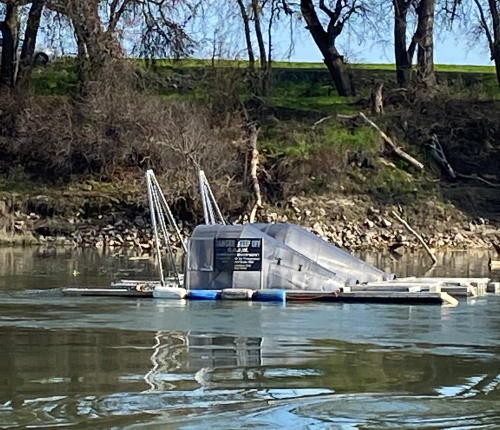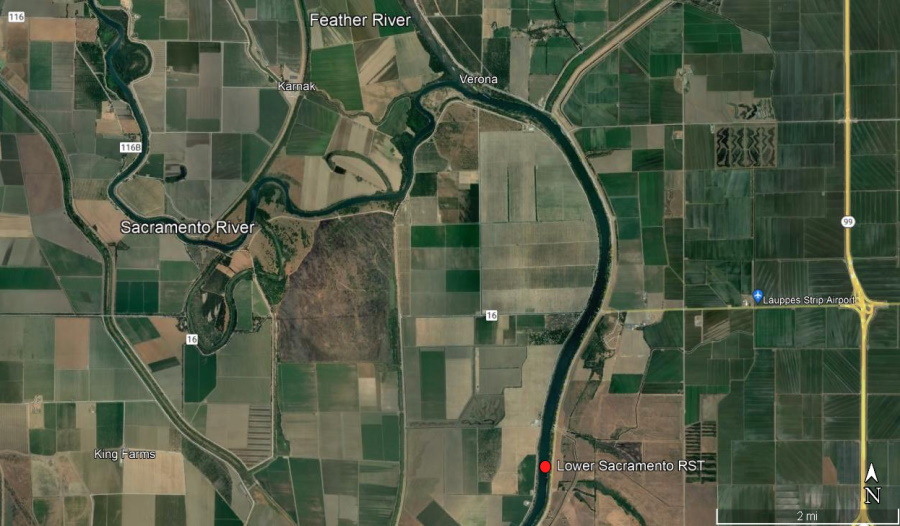Background

Lower Sacramento River RST
The North Central Region of the California Department of Fish and Wildlife operates a juvenile salmonid monitoring program on the Sacramento River below Verona, California to develop information on the temporal distribution, relative abundance, and composition of race and species of juvenile Chinook salmon (
Oncorhynchus tshawytscha) and steelhead trout (
anadromous O. mykiss) emigrating from the upper Sacramento River and Feather River to the Sacramento-San Joaquin River Delta.
Data from this monitoring will be used to inform the development of a juvenile production estimate (JPE) for spring-run Chinook salmon in the Sacramento River Watershed as required by the 2020 Incidental Take Permit No. 2081-2019-006-00 issued by CDFW to DWR for the long-term operation of the State Water Project.
Objectives
The objectives of the lower Sacramento River RST monitoring program are to:
- Estimate the number of juvenile spring-run emigrating from the Sacramento River to the Delta for use in the development of a JPE for spring-run chinook salmon in the Sacramento River watershed.
- Estimate the number of other juvenile salmonids emigrating (i.e., winter-run, fall-run, and late fall-run Chinook salmon and steelhead) emigrating from the Sacramento River to the Delta.
- Monitor, record, and compare movements of emigrating salmonids in varying environmental conditions.
- Provide data on juvenile salmonids emigrating towards the Delta to inform resource and water agency managers regarding real-time water operations decisions.
The expanded juvenile monitoring effort in the lower Sacramento River will help resource agency and water managers identify the total number of salmon emigrating from the Sacramento River watershed and contributing to the spring-run Chinook salmon population entering the Delta.
Project Location
The new lower Sacramento River RST monitoring station is located on the Sacramento River below Verona, California.

Lower Sacramento River RST Location Map